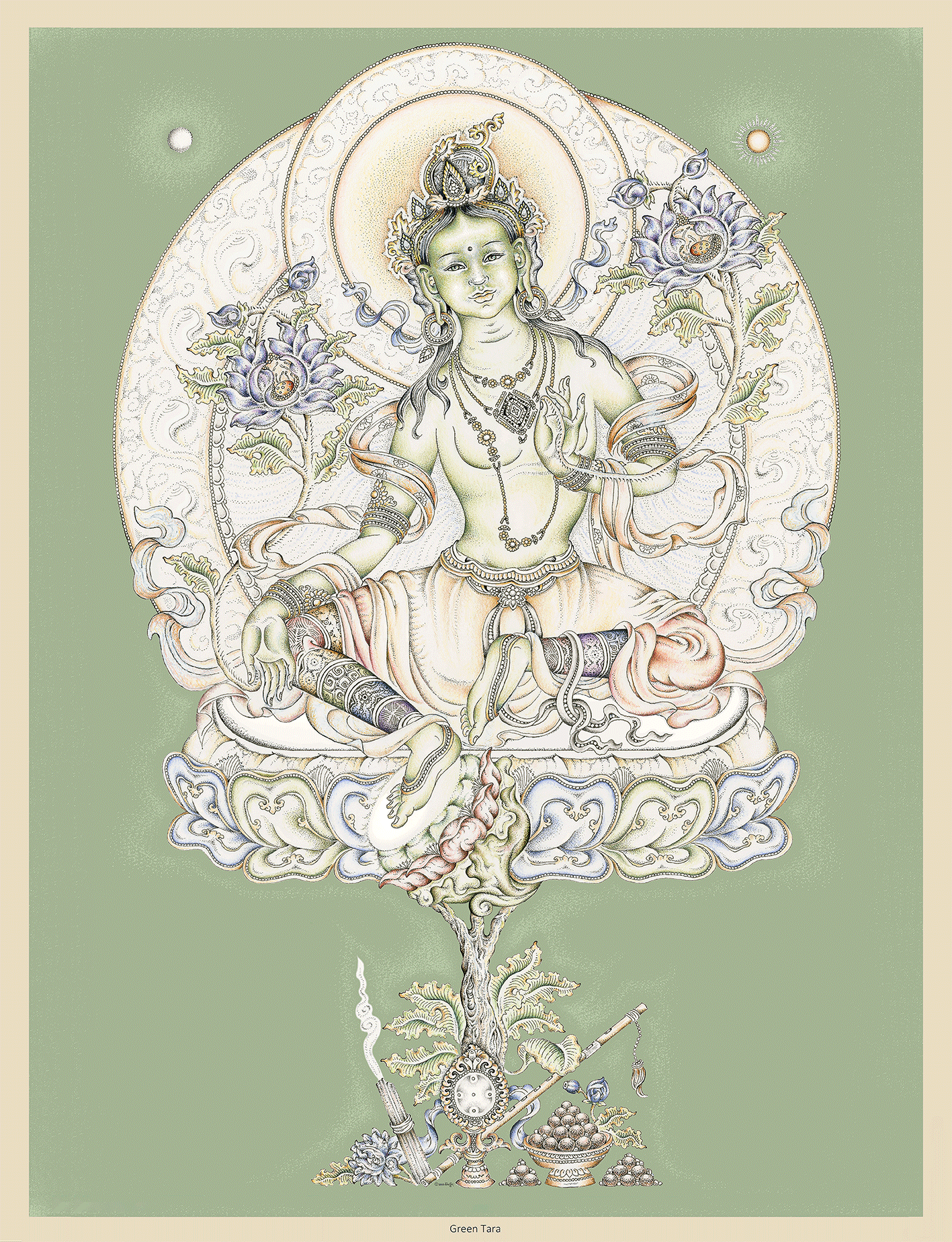Green Tara – Jetsun Dolma (Tib.)
Tara, the Liberator, has a compassion for sentient beings and a resolve to save them from suffering that are stronger than a mother’s love for her children. Tara is the main female manifestation of enlightenment in the Buddhist tradition, arisen from the tears of Avalokiteshvara, the embodiment of all the buddhas’ compassion.
Tara symbolizes all buddhas’ swift compassionate action, quick to respond to suffering and manifesting in a variety of forms according to sentient beings’ needs. In paintings and in poetry she is often depicted as coming to the immediate aid of those in danger, playful and pranking meditators who take themselves too seriously, too rigidly.
Tara is seated on a lotus cushion in a posture of ease, alert and poised, her head slightly tilted, her right leg extended to signify her readiness to leap up and help anyone who calls her, while her left leg is folded in a contemplative position signifying concentration.
In each hand she holds a blue Utpala lotus flower symbolizing purity and power, its three blossoms indicating she is the mother of all buddhas past, present and future.
Tara’s left hand is in the refuge-granting gesture, her right in the wish-fulfilling gesture. According to legend, a young princess of ages gone by named Primordial Moon became a bodhisattva, aspiring to enlightenment for the benefit of all sentient beings. Approached by monks and advised to pray to be reborn in a man’s body in order to complete her spiritual training, the princess rejected the monks’ advice, vowing to always be reborn as a woman until all suffering in the world is ended. The princess dedicated herself to attaining enlightenment, and her names changed to Tara the Liberator, with the ability to unite the practice of method and wisdom and provide all beings with whatever they desire.
Ⓒ 2003-2021 Matmonet All Rights Reserved
